Quinceañera vendors overwhelmed by demand as pandemic restrictions ease
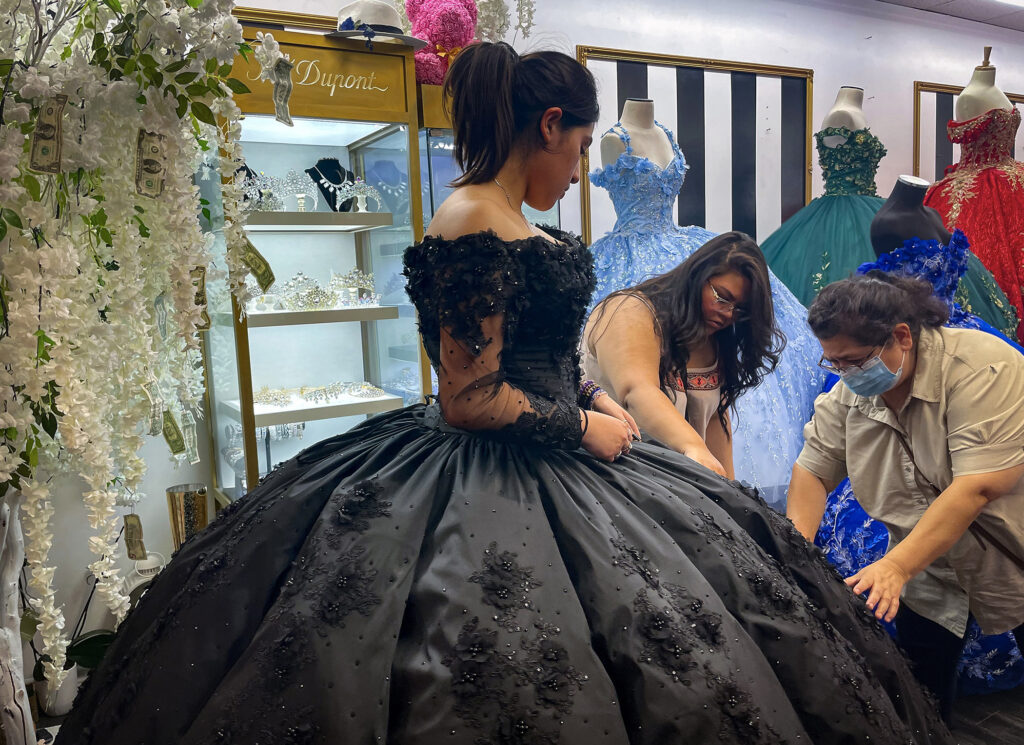
LOS ANGELES – It was an hour past the time when she would typically be clocking off her eight-hour shift, and Karina Dominguez was threading a new needle on her Singer sewing machine, the untouched satin fabric laid out before her.
In half an hour, a 16-year-old girl would walk through the shop’s doors ready to try on her tightly-fitted quinceañera gown. Dominguez had to work fast.
She gathered her scissors and measuring tape, stared back at the ticking clock and began to envision the intricate ball gown — adorned with gold embroidery and floral details — that would come from the basic sample dress she was building.
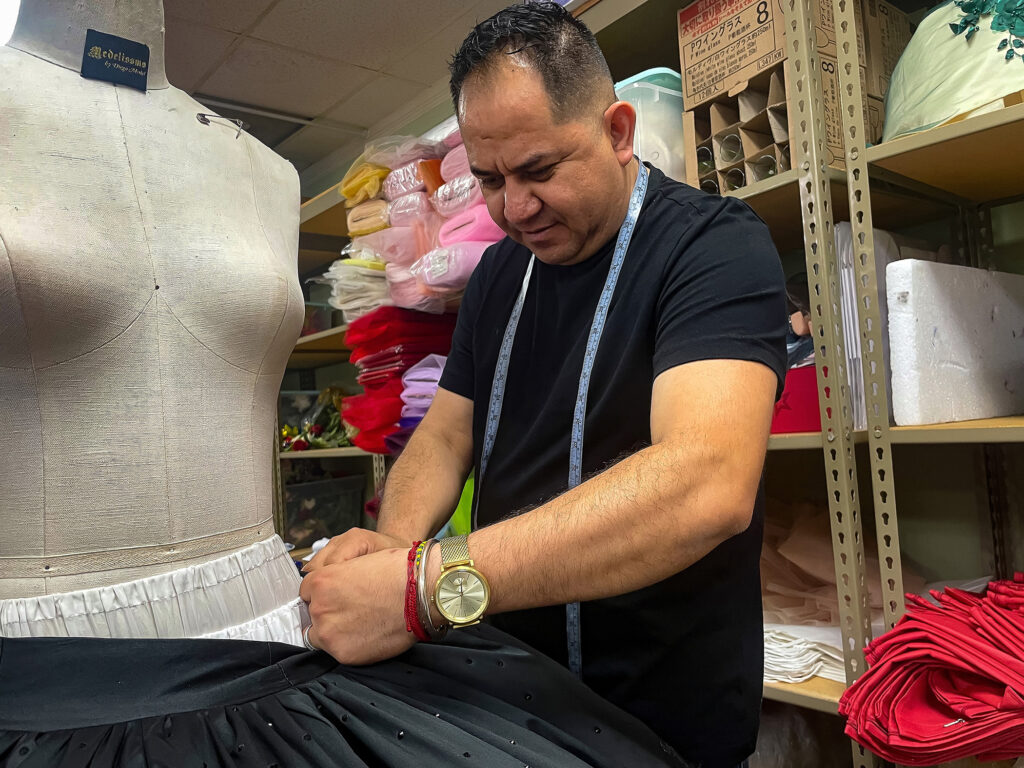
It was one of dozens of dress orders the shop has received in recent months.
Business has boomed following the end of pandemic shutdowns. And Diego Medel’s Los Angeles dress shop was just trying to keep up.
“This is all I’ve pretty much known,” Dominguez said. “I’m used to the chaos. It drives me.”
Medel opened his shop, Quinceland, five years ago. Back then, dress orders came at a steady pace. But he and his employees rarely worked nights or weekends. When the pandemic hit in 2020, his business and others like it were forced to close their doors as quinceañeras were canceled — in some cases indefinitely.
In June 2021, Los Angeles lifted restrictions on large social gatherings. Suddenly, Medel was receiving more orders than he knew what to do with. As quinceañeras pile up and customers pack his store, more disruptions loom: shipping delays, supply chain backlogs, tightened timelines, an exhausted workforce and families that expect more than ever.
“I don’t relax any days of the week,” Medel said. “I work seven days out of the week.”
No two are the same
Medel can’t recall the last time he took a day off from work.
As a small business owner, he doesn’t have the same resources as larger quinceañera dress manufacturers, which can rely on wholesalers or distributors to deliver carbon-cut copies of gowns at a faster rate.
Each dress that Medel sells at his dress shop in Huntington Park is like a snowflake — no two are the same.
A white dress with red beaded roses cascading across its corset bust.
A traditional Mexican gown, known as a charro dress, with red ruffles at the base of its colorful floral skirt.
A strappy glittering baby blue Cinderella gown next to the display case of shimmering tiaras.
In any given month, Medel will have dozens of dresses to design, customize and get into the hands of his teenage clientele.
“I have to be the one to make sure I can keep this business afloat,” he said.
At the moment, he has 46 pending orders that stretch into early 2023. The constant flow of demand means his days at the atelier, upstairs from his custom dress shop, start at 9 a.m. and often bleed into the late evenings.
Sometimes, drafting up new designs or sorting through orders leads to working late at night, or not sleeping at all.
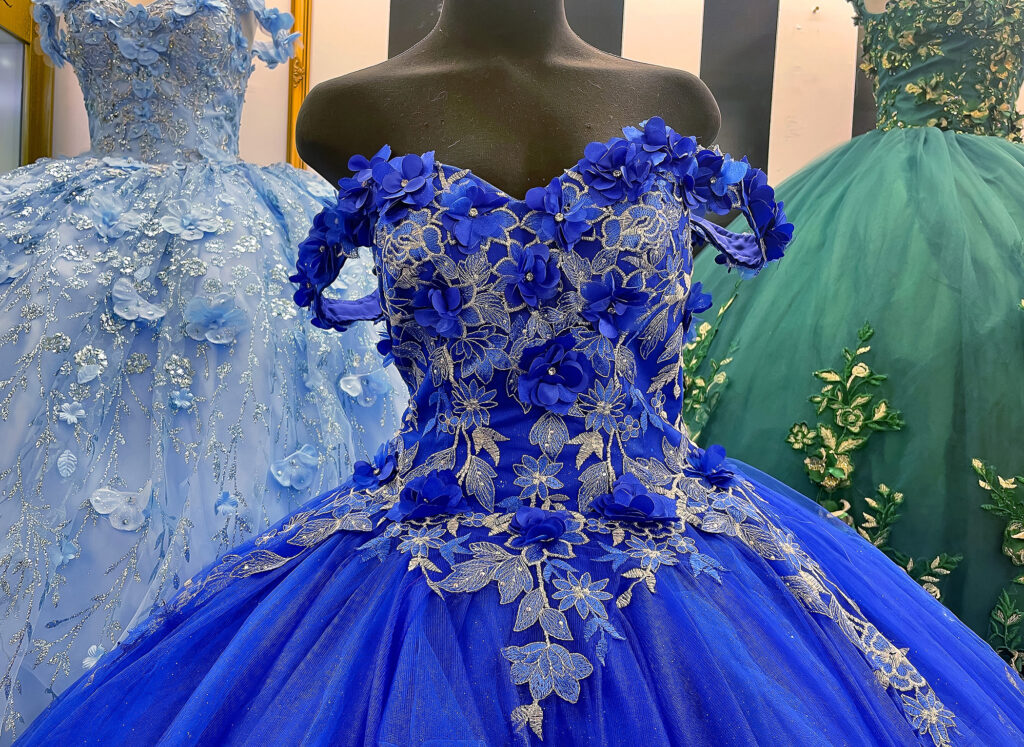
The length of time it takes to feasibly finish dress orders has also shifted, leading Medel to be more selective about which projects he takes on.
Typically, he tries to avoid accepting orders for parties any sooner than eight months out. It’s virtually impossible that he will agree to take on a dress with less than six month’s notice. Any less than that is stretching himself too thin.
In the last year, the party industry as a whole has rebounded with a vengeance — and has left Medel’s and other businesses struggling to cope.
Hans Ramirez, choreographer and owner with My Sweet 15, based in Los Angeles, said many of the company’s dancers left the country or found work elsewhere.
Celia Barrios, an event planner, said she has been receiving around 45 inquiries from families a week. Sometimes, she’ll be answering more than 20 calls or messages in a single day from families asking for availability or prices.
Before the pandemic, she said, Barrios averaged about three to five calls a day.
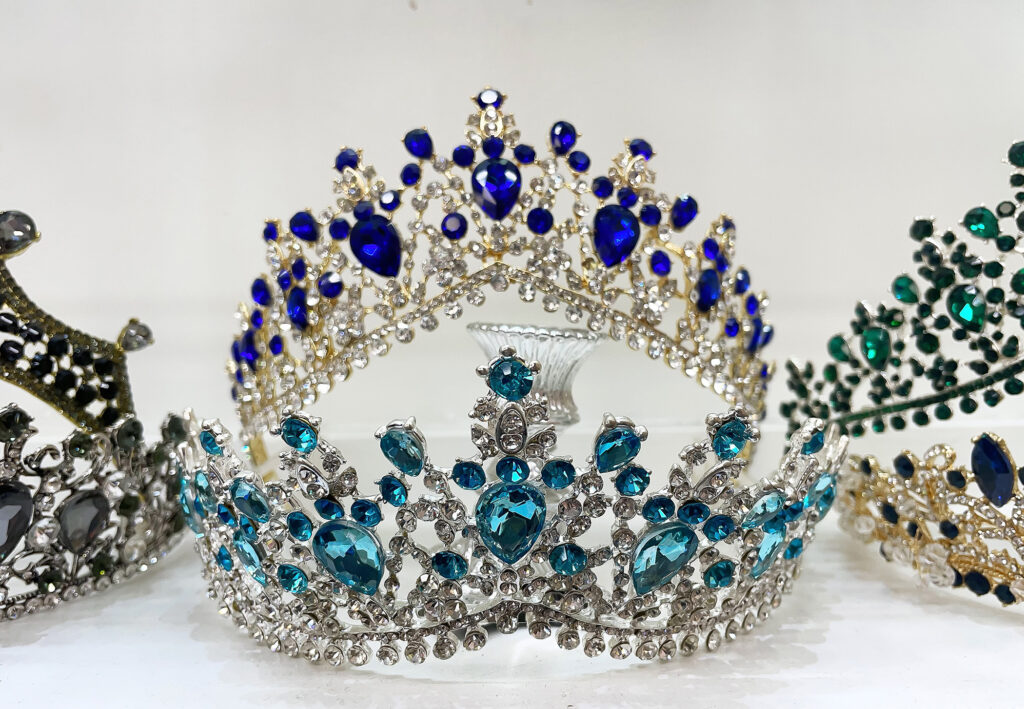
“Other than a little extra stress and being tired, because you’re trying to accommodate everyone, you just have to remember to breathe and take each event at a time and be realistic,” Barrios said.
Quinceañeras are complicated — and require a coordinated cast of vendors to pull together. There is food to cater, choreography to plan, music to arrange, flowers to pick and, of course, the dress.
Many small businesses are still reeling from the effects of the pandemic, job losses and a persisting backlog of products.
But families, intent on catching up on lost time, are pushing to plan parties on timelines that vendors say are unrealistic.
“People haven’t had this for so long and just want to have these social gatherings once again,” Barrios said.
A new timeline
Before the pandemic, families could comfortably secure a dress a month or two ahead of the quinceañera. Today, that’s unheard of.
Materials are harder to come by or — with inflation soaring past 9 percent — are more expensive. Wait times for dresses from retailers or custom boutiques have stretched on.
In California, businesses have dealt with backlogs and shipping delays because each of the state’s 11 ports are privately run and operate without a central state authority regulating their processes. Federal regulations and overseas disruptions have compounded the problem, vendors said.
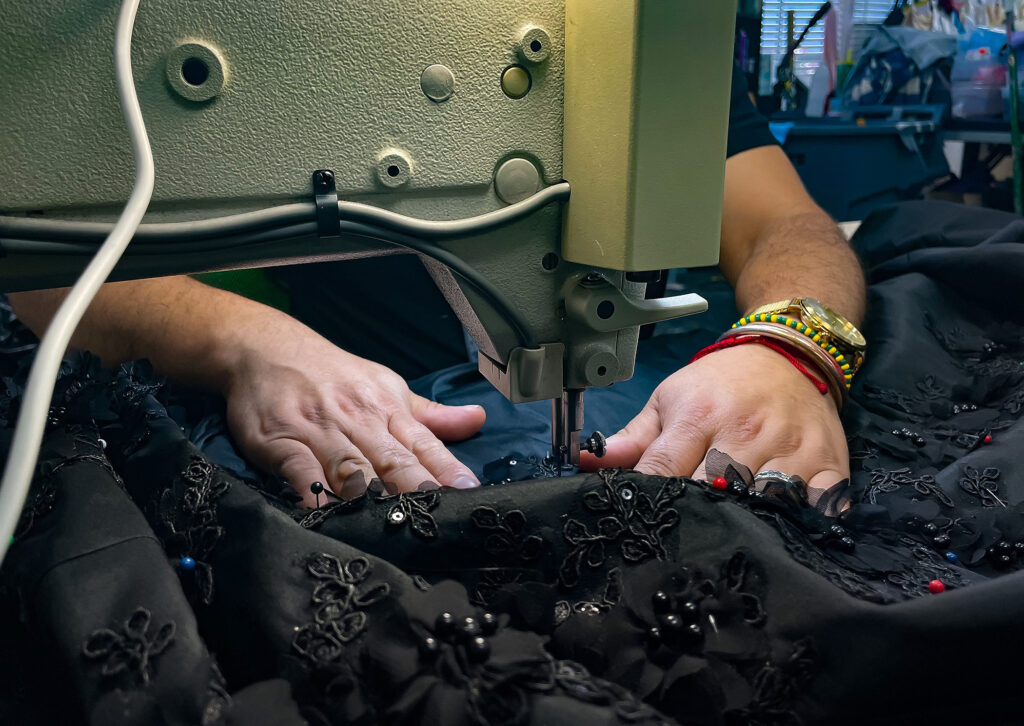
Families largely have chosen to reschedule events tied to specific ages or milestones, such as anniversaries, bar mitzvahs or quinceañeras, rather than cancel them altogether due to the pandemic, Rachel Michelin, president and CEO of California Retailers Association.
“We want to have these parties,” Michelin said. “We want to have those traditions, and I think that there was that pent up kind of buying power.”
‘I’ve waited my entire life for this’
Dayanara Carrillo, 16, flashed a wide grin as the Quinceland receptionist parted the curtains to reveal a floor-length mirror.
She was transfixed by her own reflection, draped in a burgundy princess gown fitted exactly to her figure. The dress had been assembled in just 30 minutes.
The girl snuck glances at her grandma, Ana Carrillo, and her 5-year-old sister, Alejandra. They gazed up at her in awe.
The family had waited more than a year for this moment. Dayanara’s quinceañera was originally planned for July 2021 — her actual 15th birthday. But securing a space for a large family gathering proved impossible. COVID-19 vaccines had only begun being distributed months before, and viral case counts were still on the rise. As COVID cases continued to tick up, the family delayed.
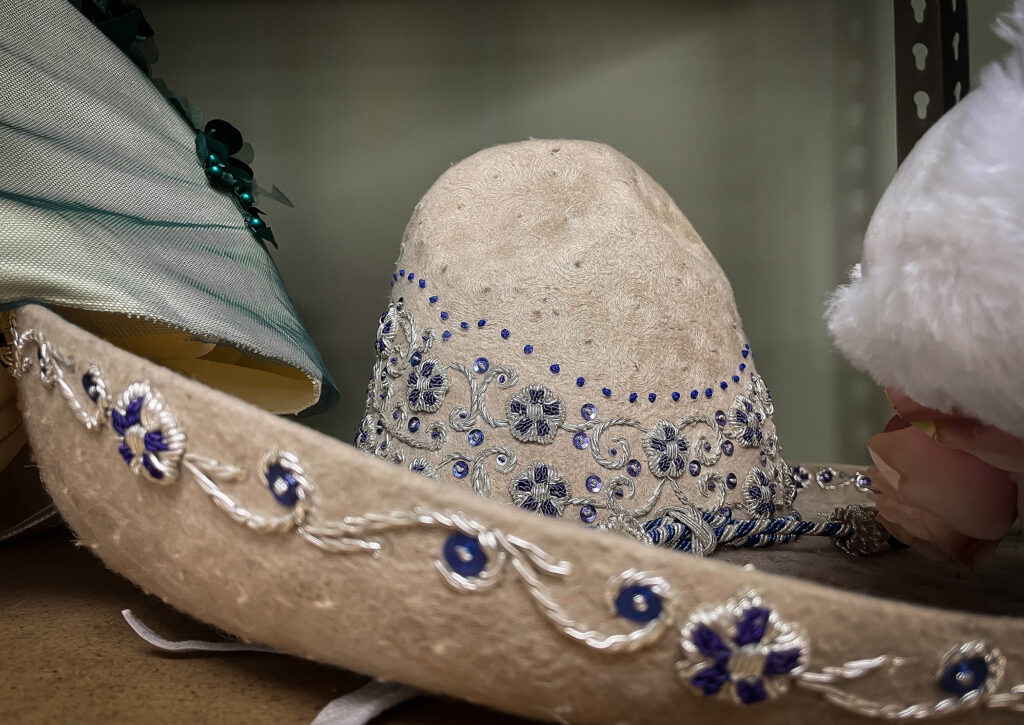
Now, at 16, Dayanara’s wait was nearly over. She had witnessed cousins, tías and her older sister strut around banquet halls and churches in their elaborate quince dresses, dreaming of the day it would be her turn.
In January, Dayanara found a photo hanging on the walls of Medel’s studio featuring a burgundy dress with gold embroidery carefully stitched across the corset and skirt. She wanted to silhouette her figure, and reflect the traditions of her Chicana culture.
“I’ve waited my entire life for this,” Dayanara said. “It’s just so crazy to see me finally being part of a process that I’ve seen the women in my family feel so beautiful in.”
As she twirled in her black Converse, the white petticoat underneath the gown swayed with her every movement.
It would be another week before the dress would be finished, and the seventh dress that Medel designed by hand in as many days.
He tells himself that maybe he can take a break in August. But the order forms keep piling up, and there is always another dress to make.
Heidi Perez-Moreno is a senior at the University of North Carolina, Chapel Hill, where she is pursuing a degree in journalism. She reports in English and Spanish, and is completing an internship as a Metro reporter for the L.A. Times en Español. She wants to pursue a career in narrative journalism. Reach her at heidi.perez0123 [at] gmail [dot] com and on Twitter @heyperezmoreno.